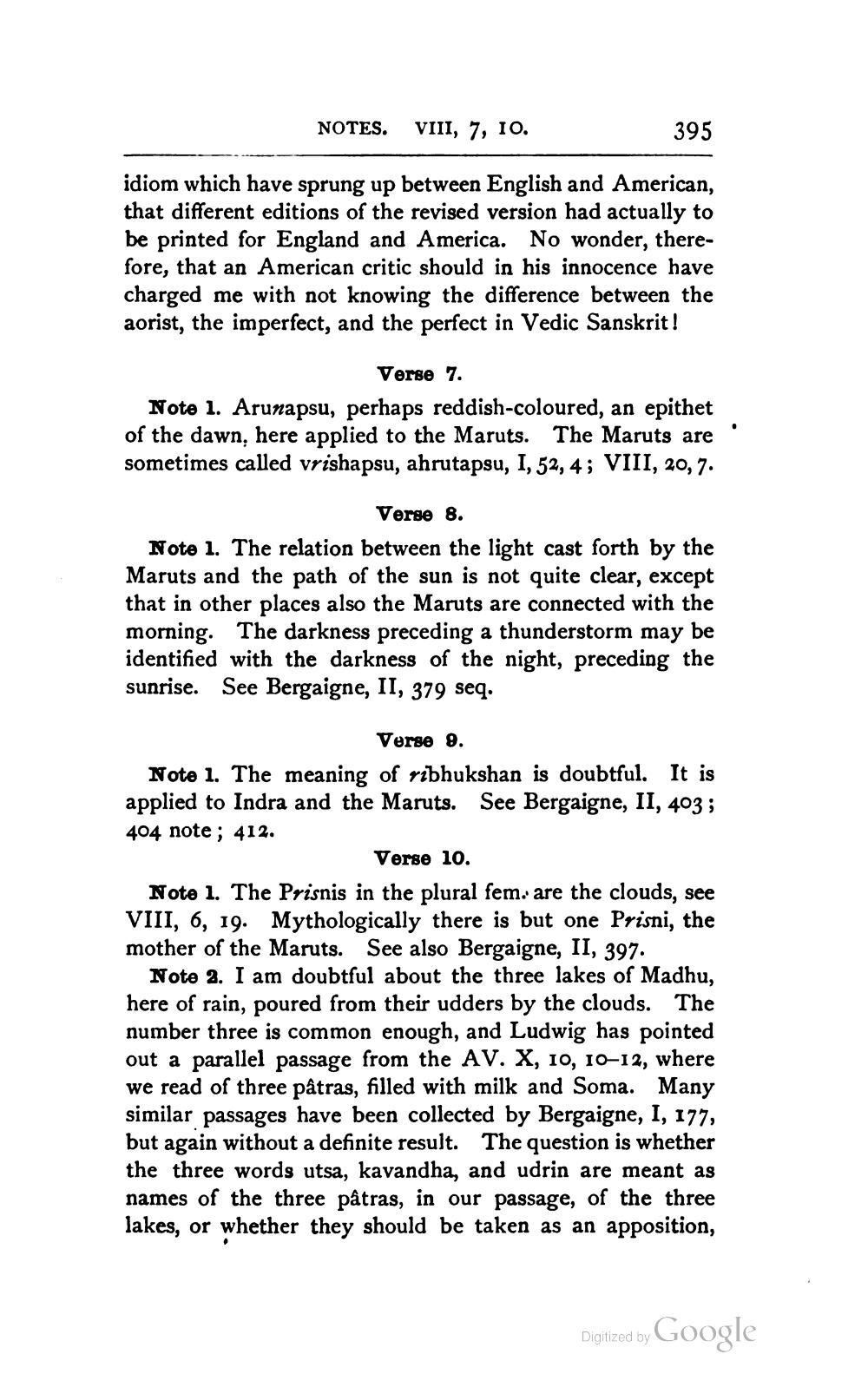________________
NOTES.
VIII, 7, 10.
395
idiom which have sprung up between English and American, that different editions of the revised version had actually to be printed for England and America. No wonder, therefore, that an American critic should in his innocence have charged me with not knowing the difference between the aorist, the imperfect, and the perfect in Vedic Sanskrit !
Verse 7. Note 1. Arunapsu, perhaps reddish-coloured, an epithet of the dawn, here applied to the Maruts. The Maruts are sometimes called vrishapsu, ahrutapsu, 1, 52, 4; VIII, 20, 7.
Verse 8. Note 1. The relation between the light cast forth by the Maruts and the path of the sun is not quite clear, except that in other places also the Maruts are connected with the morning. The darkness preceding a thunderstorm may be identified with the darkness of the night, preceding the sunrise. See Bergaigne, II, 379 seq.
Verse 9. Note 1. The meaning of ribhukshan is doubtful. It is applied to Indra and the Maruts. See Bergaigne, II, 403 ; 404 note; 412.
Verse 10. Note 1. The Prisnis in the plural fem. are the clouds, see VIII, 6, 19. Mythologically there is but one Prisni, the mother of the Maruts. See also Bergaigne, II, 397.
Note 8. I am doubtful about the three lakes of Madhu, here of rain, poured from their udders by the clouds. The number three is common enough, and Ludwig has pointed out a parallel passage from the AV. X, 10, 10–12, where we read of three pâtras, filled with milk and Soma. Many similar passages have been collected by Bergaigne, I, 177, but again without a definite result. The question is whether the three words utsa, kavandha, and udrin are meant as names of the three pâtras, in our passage, of the three lakes, or whether they should be taken as an apposition,
Digitized by
Digized by Google




